White Places – Black Holes
Congress Day 2
The first and second day of the congress will be devoted to a return to history, with analyses and criticisms of the ways in which regions have been preceived in the dominant history of art in past decades. To the present date the question has not been addressed: in the context of this history, how can the specific value and originality of the art of local scenes be defined, without applying a colonial or other distorted perspective? A special sub-theme will be devoted to Pierre Restany and his international activities, specifically his relations with central europe or other regions outside France.
Date: 25. 9. 2013
Venues: Kasarne/Kulturpark, Kukučínova 2 , 040 01 Košice
9:00 AM
Round Table – Honour to Pierre Restany:
Zuzana Bartošová (SK), Rebollo Goncalves Lisbeth (BR), Raphael Cuir (F), Henry Meyric Hughes (UK), Alex Mlynárčik (SK), Henry Perier (F)
Jean - Marc Poinsot (F)
10:45 AM
Discussion + Coffee Break
11:00 AM
Noemi Smolik (CZ)
11:40 AM
Karen Von Veh (ZA)
White/Black/ Grey Areas: Reflections on Transition in South African Art
This paper presents a brief survey of the effects and after-effects of cultural isolation in South Africa as a counterpoint to the post-totalitarian experiences of some European countries. I consider selected art works that employ Christian iconography as allegory to reflect both the past and the current social and political milieu. Apartheid ended with the first democratic elections in South Africa in 1994 but the difficulties of social transition continue to inform contemporary artworks. I therefore assess the manner in which the ‘black hole’ of apartheid politics resulted in a cultural vacuum that is still, 20 years later, affecting the content and trajectory of South African art.
12:10 AM
Trinidad Perez (EC)
From Art Criticism To Contemporary Critical Practices in Latin America and Ecuador
This paper reviews the role and sites of inscription that art criticism has had in the Latin American Art scene of the last decades and its complicity with a contemporary more and more concerned about its social and political engagement.
12:40 AM
Block Discussion
1:00 PM - 2:30 PM
Lunch Break
2:30 PM
Verlle Poupeye (JM)
Beyond the mimic men: Contemporary Jamaica Art and its place in the global art world
This paper examines how Jamaican art - in its broadest sense – has been positioned and has positioned itself in the international art world over time and how notions of Jamaican art have been articulated, and challenged, in the process. After a brief examination of the main shifts that have occurred from the colonial to the modern period, the paper focuses on how young contemporary artists such as Ebony G. Patterson, Marlon James, Phillip Thomas and Matthew McCarthy are positioning themselves in this context with, as the Canadian critic R.M. Vaughan has put it "full confidence in their particular and shared importance in the international art stream [in a new art world] that that looks first to please itself".
2:50 PM
Ellaine King (US)
A Cultural Capital Quagmire
The AICA Košice call for papers asks, “Is it really criticism which decides what is accepted and rejected, and what methods does it employ in its research procedures?” It would be appealing if such were a simple solution therefore my answer is NO! Issues are far more complicated in a digital age and one influenced by a powerful global market. In the paper for the Congress, I will attempt to explain how cultural products are legitimated as art. I will argue that there is an analogy between social movement success and recognition as art, so that the major concepts that explain the paths of social movements also apply to art worlds: economics, power, political opportunity structures, resource mobilization, and framing processes. The serious issues impacting artists in Central Europe are similar to other global artists who are do not live in the womb of particular art centers such as New York, Berlin, Los Angeles and London. However, the new critic can become a vital force to build international bridges— he/she must be an insightful commentator and expositor, a facilitator of public discourse mediating between artist, audience, institution and academics, and one who embraces new technology and its offerings.
3:30 PM
Nini Palavandishvili (GE)
Black Holes. When the history is not written.
The theme of my talk will be missing written history and analysis of Georgian art from 80ies until today. In late 80ies and after fall of the soviet union georgian art experienced very interesting rapid development, there were several group of artists like "10th floor" or "Marjanishvili workshop group", who introduced radically different perception of and approach to art for that time, they made installations, performances... Since then political, economical changes affected Georgian art developed in different ways, Tbilisi State Art Academy educated students still in very conservative way, country lacks contemporary or experimental art spaces, many Georgian artists emigrated and built their carrier in west... And there is huge black hole, which is lack of art criticism and theoretical analysis on how georgian art developed since late 80ies, what is the condition now and how do we see our future on local Georgian as well as regional and international art map.
4:00 PM
Lena Prents (BY)
Making the territories of nowhere visible
Both conference key words – white places, black holes – could be perfectly used relating to the art in Belarus. The enumeration may be continued with terra incognita, in-between, territory of nowhere etc. This circumstance is not only caused by a subaltern position of the country (and its art history) within the world orders, the distance to the vital centers of the art world or self-reflexive, hermetic local art practices, but also because of many blank spots in the own art history which need to be dealt with. The lecture depicts along a short outline of the history of Belarusian art in the context of political developments the cartography of these blank spots and shows the perspectives of the perception of local art outside the country.
4:30 PM
Discussion + Coffee Break
4:50 PM
Belinda Grace Gardner (DE)
Learning from Bucharest. Rethinking ‘white spots’ of art production in Central and Southeastern Europe
Oscillating between post-communist repercussions and the problematic dynamics of turbo-capitalism, Bucharest epitomizes aspects of art practice and art reception characteristic of the complex cultural texture of Central and Southeastern European as a whole. The paper explores how the Iron Curtain paradigms of ‘East’ and ‘West’ might be transcended and the ‘white spots’ of art production be put (back) on the map without being usurped by the mechanisms of the Western art market, as well as how established patterns of art perception might benefit from the deep shifts in which artists in Central and Southeastern Europe are currently engaged.
5:10 PM
Nadja Zgonik (SLO)
Hybrid Identities of Cultures in Small Nations: The Example of Slovenia
Several art history examples from Slovenia, located at the edge of Balkans, between the central and southeastern Europe, linked to the West and to the East, whose culture could be defined as peripheral or culture in a small nation, will show us how definition of its culture throughout the twentieth century alternated between progressive, Slavic, Christian, Byzantine, international, global and Eastern. Such hybrid cultures, where artistic production is characterized by an influence of mixture of alternating cultural currents, set a researcher before a difficult task. We could examine the usefulness of art geography, one of methodologies of art from the past, for today and ask ourselves if reversing the point of view from the periphery toward the centre could transform the general concept of art history.
5:30 PM
Censorship Panel Discussion
Burcu Pelvanoglu, Liam Kelly (UK)
5:50 PM - 7:30 PM (approx.)
General Second Congress Day Discussion
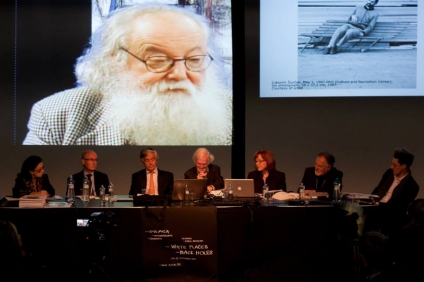
Round Table – Honour to Pierre Restany
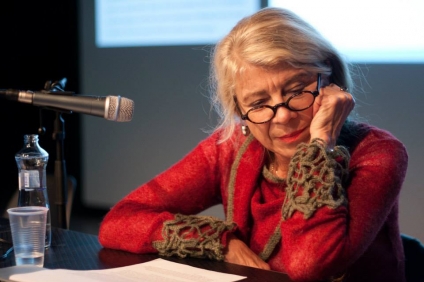
Noemi Smolik
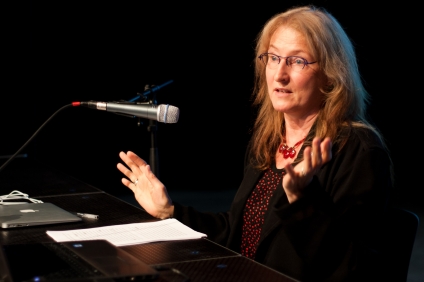
Karen Von Veh
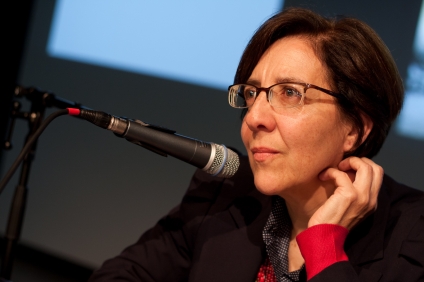
Trinidad Perez
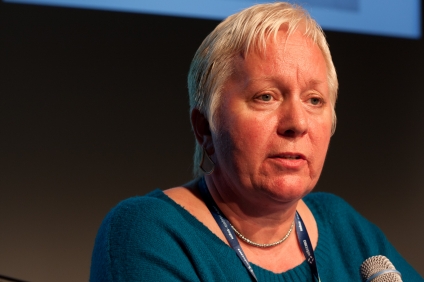
Verlle Poupeye
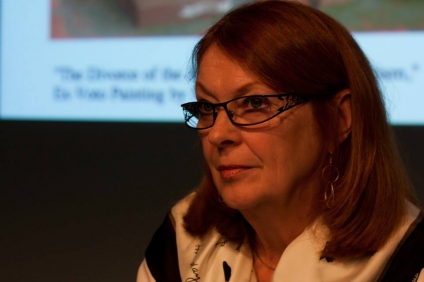
Ellaine King
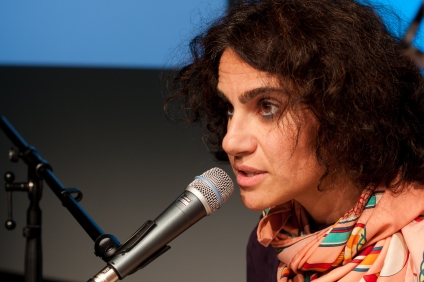
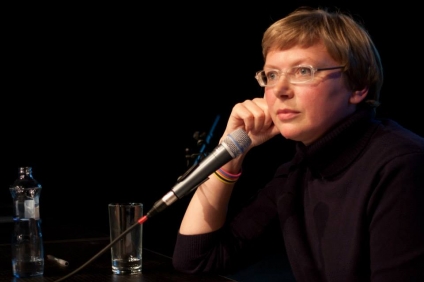
Lena Prents
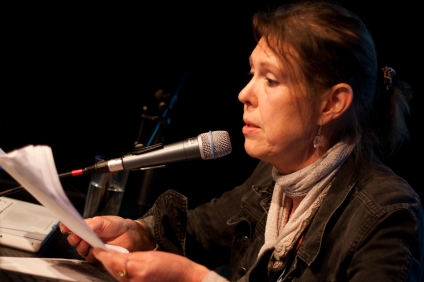
Belinda Grace Gardner
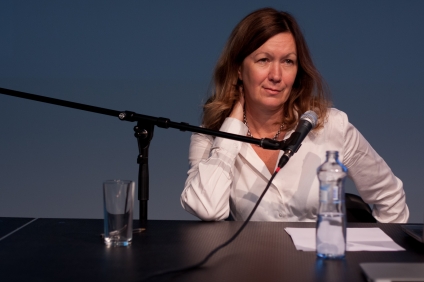
Nadja Zgonik
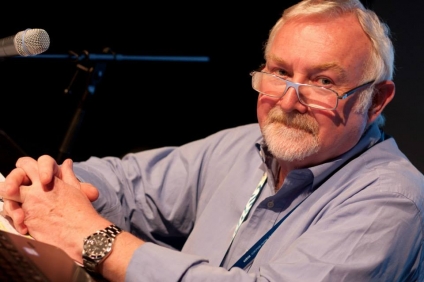
Censorship Panel Discussion Liam Kelly
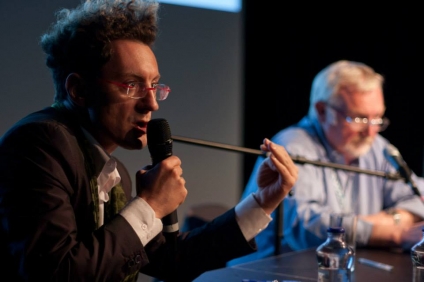
Censorship Panel Discussion Raphael Cuir




